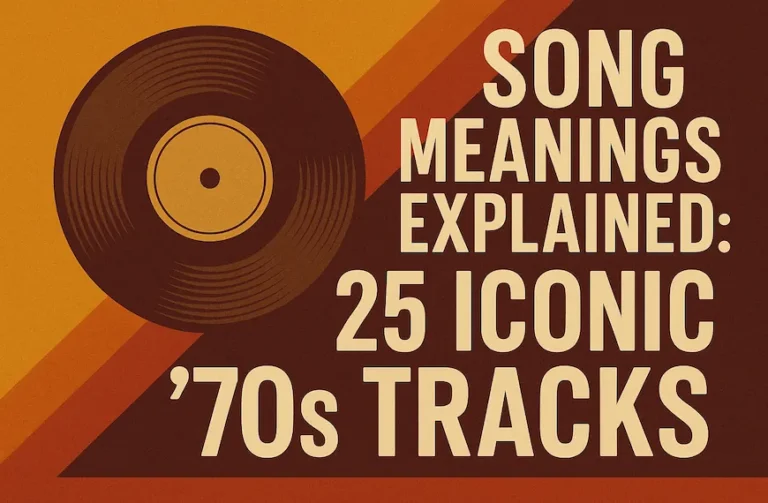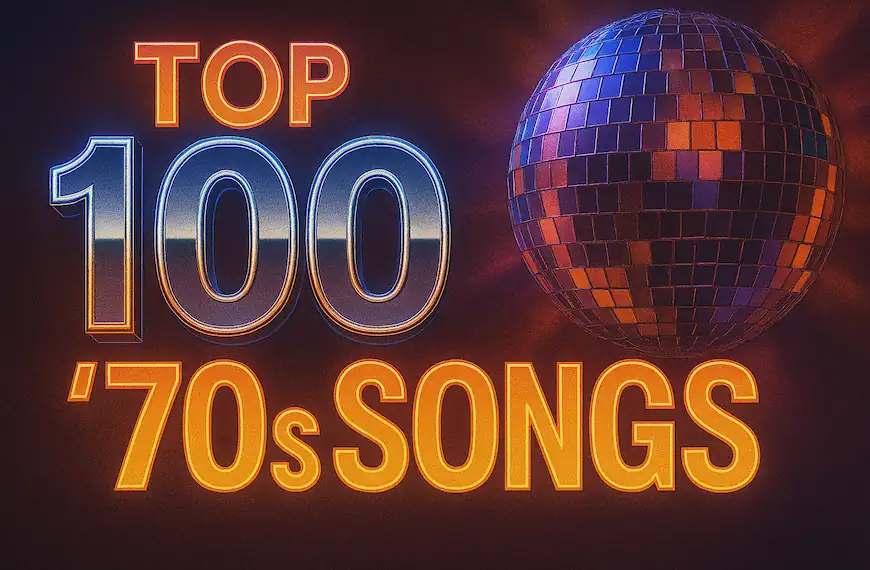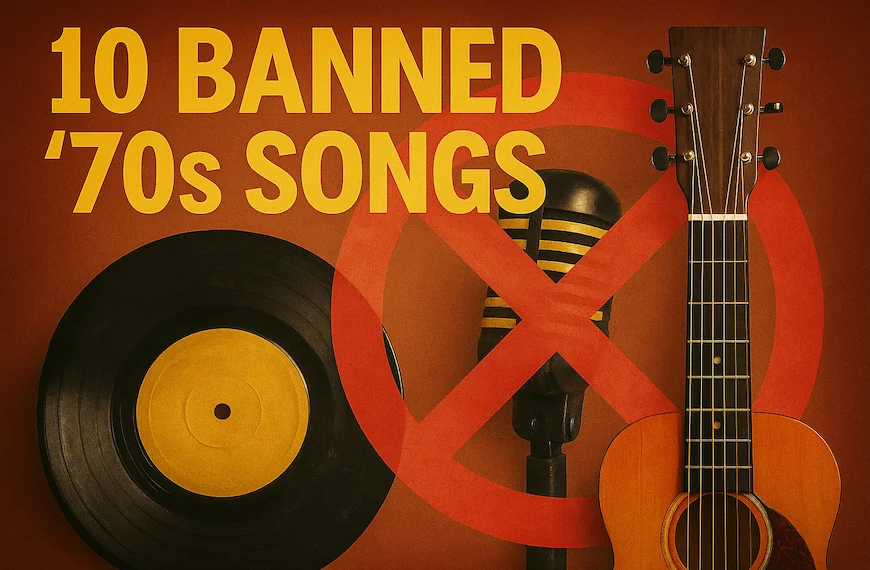The 1970s were packed with anthems that still soundtrack parties, car rides, and quiet nights. Below, we unpack what these songs are really about, why they mattered, and the stories that shaped them.
Quick Guide: 25 Songs, Artists, Years, Themes
| Song | Artist | Year | Theme |
|---|---|---|---|
| Bohemian Rhapsody | Queen | 1975 | Identity, artistry |
| Imagine | John Lennon | 1971 | Peace, utopia |
| Hotel California | Eagles | 1976 | Excess, temptation |
| Stairway to Heaven | Led Zeppelin | 1971 | Spiritual search |
| Stayin’ Alive | Bee Gees | 1977 | Resilience |
| Dancing Queen | ABBA | 1976 | Joy, youth |
| What’s Going On | Marvin Gaye | 1971 | Protest, empathy |
| I Will Survive | Gloria Gaynor | 1978 | Empowerment |
| American Pie | Don McLean | 1971 | Nostalgia, rock lore |
| No Woman, No Cry | Bob Marley & The Wailers | 1975 | Memory, hope |
| Go Your Own Way | Fleetwood Mac | 1977 | Breakup, independence |
| Dreams | Fleetwood Mac | 1977 | Heartbreak, intuition |
| Superstition | Stevie Wonder | 1972 | Rationality vs myth |
| Bridge Over Troubled Water | Simon & Garfunkel | 1970 | Comfort, faith |
| Life on Mars? | David Bowie | 1971 | Fame, alienation |
| Paranoid | Black Sabbath | 1970 | Anxiety, isolation |
| Baba O’Riley | The Who | 1971 | Youth, disillusionment |
| London Calling | The Clash | 1979 | Crisis, rebellion |
| Smoke on the Water | Deep Purple | 1972 | Disaster, band myth |
| Heart of Glass | Blondie | 1978 | Love, crossover pop |
| Killing Me Softly with His Song | Roberta Flack | 1973 | Intimacy, artistry |
| Walk on the Wild Side | Lou Reed | 1972 | Identity, counterculture |
| September | Earth, Wind & Fire | 1978 | Celebration, memory |
| Rapper’s Delight | The Sugarhill Gang | 1979 | Innovation, party |
| Anarchy in the UK | Sex Pistols | 1976 | Punk manifesto |
Bohemian Rhapsody – Queen – 1975
A six minute suite about guilt, bravado, and theatrical self invention. Freddie Mercury folds opera, hard rock, and ballad into one audacious statement. Its mystery invites endless readings while celebrating artistic freedom.
Imagine – John Lennon – 1971
A piano hymn asking listeners to picture life without borders, possessions, or war. Lennon strips production to spotlight a simple, radical idea. It became a secular prayer for peace movements worldwide.
Hotel California – Eagles – 1976
A cautionary tale about seduction and excess on the West Coast. The hotel symbolizes a glittering scene you enter easily but cannot leave. Twin guitars mirror the lure and trap of fame.
Stairway to Heaven – Led Zeppelin – 1971
A spiritual quest that grows from folk whisper to rock thunder. The “lady” chasing purchaseable salvation critiques material illusions. Page’s solo feels like climbing, then breaking through the clouds.
Stayin’ Alive – Bee Gees – 1977
A strut through tough city streets with head held high. Beneath disco gloss, the lyric faces unemployment and grit. That relentless groove taught the world how survival can sound.
Dancing Queen – ABBA – 1976
Three minutes of pure release on a crowded floor. The vocal stacks shimmer like mirrorball light. It celebrates the teenage rush where music makes you feel infinite.
What’s Going On – Marvin Gaye – 1971
Born from police brutality and Vietnam era anxiety. Gaye softens protest with warmth, pleading for understanding rather than anger. The sax intro and layered vocals welcome listeners into conversation.
I Will Survive – Gloria Gaynor – 1978
A breakup becomes a personal revolution. The lyric moves from shock to steel, reclaiming dignity step by step. Its chorus turned into a universal resilience anthem.
American Pie – Don McLean – 1971
A long look at rock and America after innocence cracked. References to “the day the music died” anchor decades of change. Melancholy, witty verses track culture’s shifting dance.
No Woman, No Cry – Bob Marley & The Wailers – 1975
A memory song that comforts by naming hardship. The live version’s crowd singalong turns struggle into solidarity. It promises better days without denying reality.
Go Your Own Way – Fleetwood Mac – 1977
A raw postcard from a band breakup happening in real time. Lindsey Buckingham’s choppy guitar mirrors the push and pull of separation. Independence stings, but it also frees.
Dreams – Fleetwood Mac – 1977
Stevie Nicks answers with calm, prophetic clarity. The rhythm glides while warnings land softly, almost like rain. Heartache here sounds wise, not bitter.
Superstition – Stevie Wonder – 1972
A clavinet riff that practically levitates. Wonder warns against blaming fate or folklore for choices. The groove argues for clear eyes and personal responsibility.
Bridge Over Troubled Water – Simon & Garfunkel – 1970
A promise to carry someone when waters rise. Gospel touches lift a gentle melody into cathedral space. It defined comfort as active, steady presence.
Life on Mars? – David Bowie – 1971
A surreal montage of media and fame overload. Bowie’s vocal soars over piano drama and strings. The question mark matters, pointing to wonder and unease.
Paranoid – Black Sabbath – 1970
Written quickly, it nails spiraling thoughts and social disconnect. The riff is blunt, almost claustrophobic. Heavy music became a language for invisible struggles.
Baba O’Riley – The Who – 1971
Not called “Teenage Wasteland,” though the lyric sticks. Synth patterns and violin frame a generation staring down disillusionment. It urges kids to gather, not fade.
London Calling – The Clash – 1979
Alarms ring about climate, class, and looming collapse. Strummer barks headlines like street dispatches. Punk expands into a world report without losing fire.
Smoke on the Water – Deep Purple – 1972
A real casino fire on Lake Geneva sparked the tale. The riff is beginner simple, legend large. It documents chaos that somehow birthed a classic session.
Heart of Glass – Blondie – 1978
Punk cool meets disco sheen in a daring pivot. Debbie Harry sings detachment while the beat sparkles. Crossing scenes, the band proved rules were optional.
Killing Me Softly with His Song – Roberta Flack – 1973
A singer hears her life reflected and quietly dissolves. Flack’s restrained delivery turns confession into hush. It shows how music reads us back.
Walk on the Wild Side – Lou Reed – 1972
Portraits of Factory characters ride a relaxed bass line. Reed normalizes taboo topics by sounding unbothered and kind. The chorus invites empathy, not judgment.
September – Earth, Wind & Fire – 1978
Joy distilled into horns, handclaps, and that magical date. Meaning is less timeline, more feeling you always remember. It proves celebration is its own philosophy.
Rapper’s Delight – The Sugarhill Gang – 1979
Playful boasts over Chic’s “Good Times” bass launched rap worldwide. Lyrical party talk opened a new mainstream doorway. A pivotal first taste for many listeners.
Anarchy in the UK – Sex Pistols – 1976
A jolt that mocked manners and sold shock. The sneer, the noise, the slogan were the point. Punk’s fuse was lit, and everything got louder.
Craving more 70s fun?
Put your memory to the test with our 70s Music Quiz and spot brands in the Logo Quiz.
Then dive deeper into playlists on our Best 70s Songs hub.
















